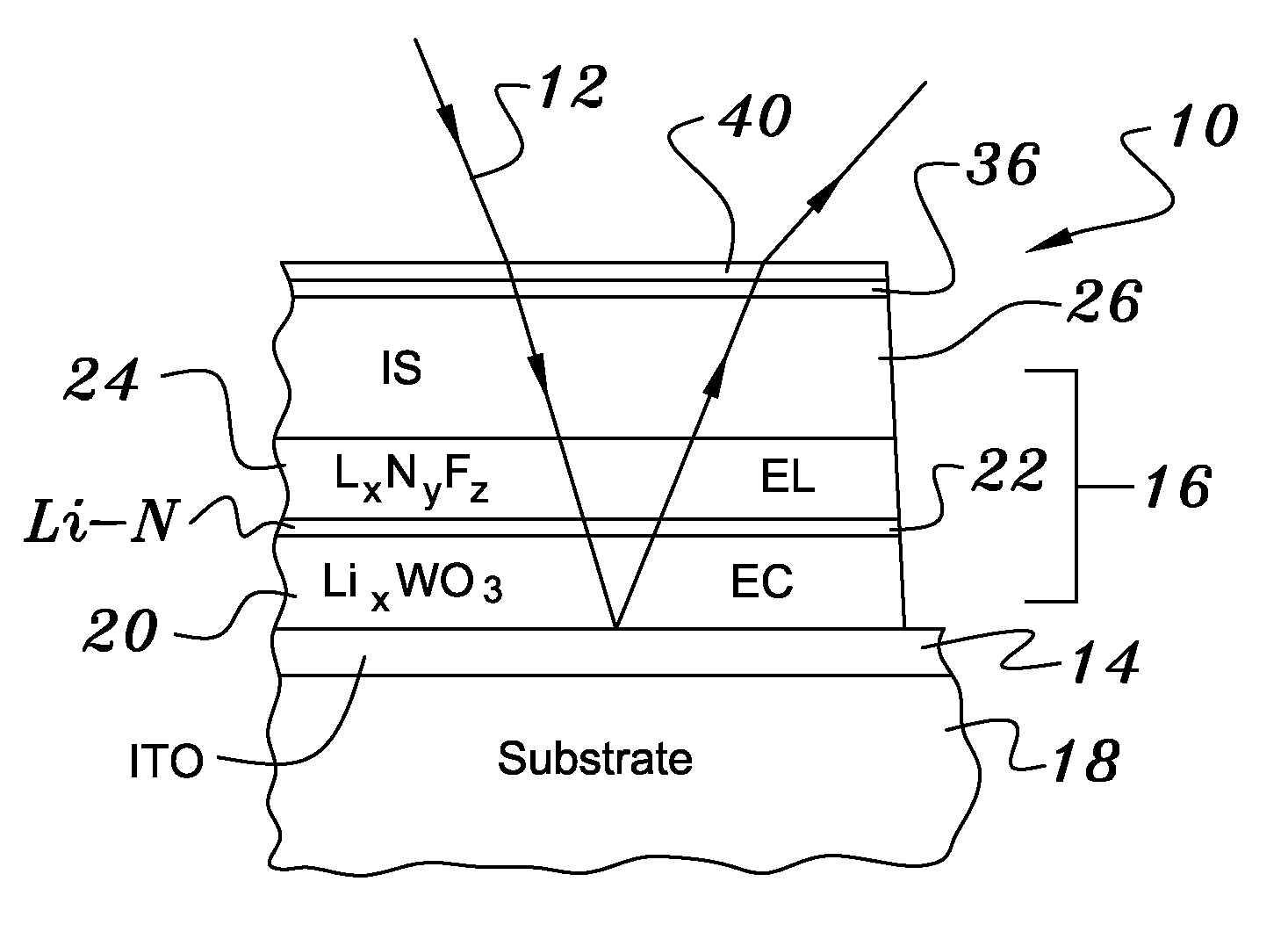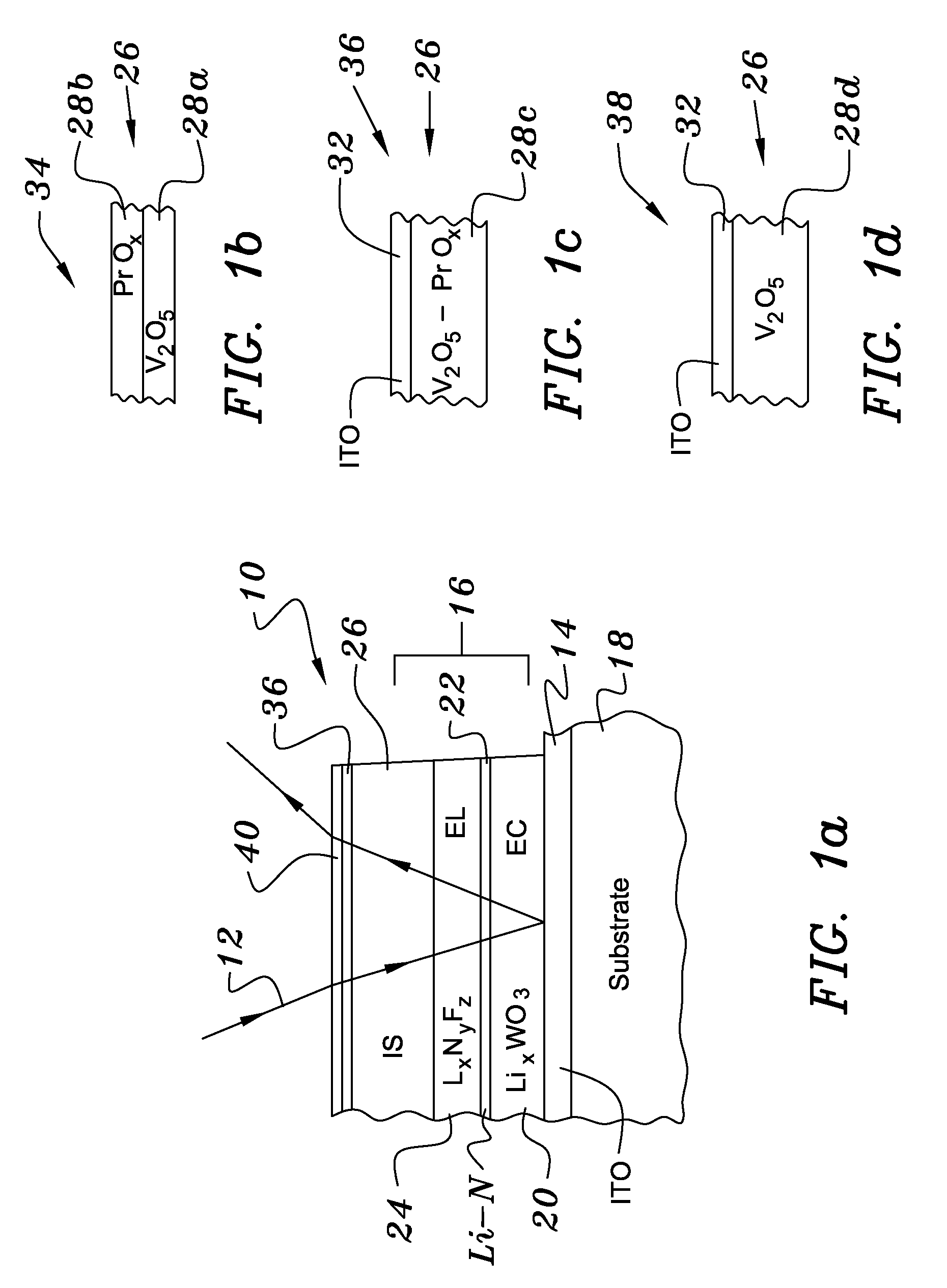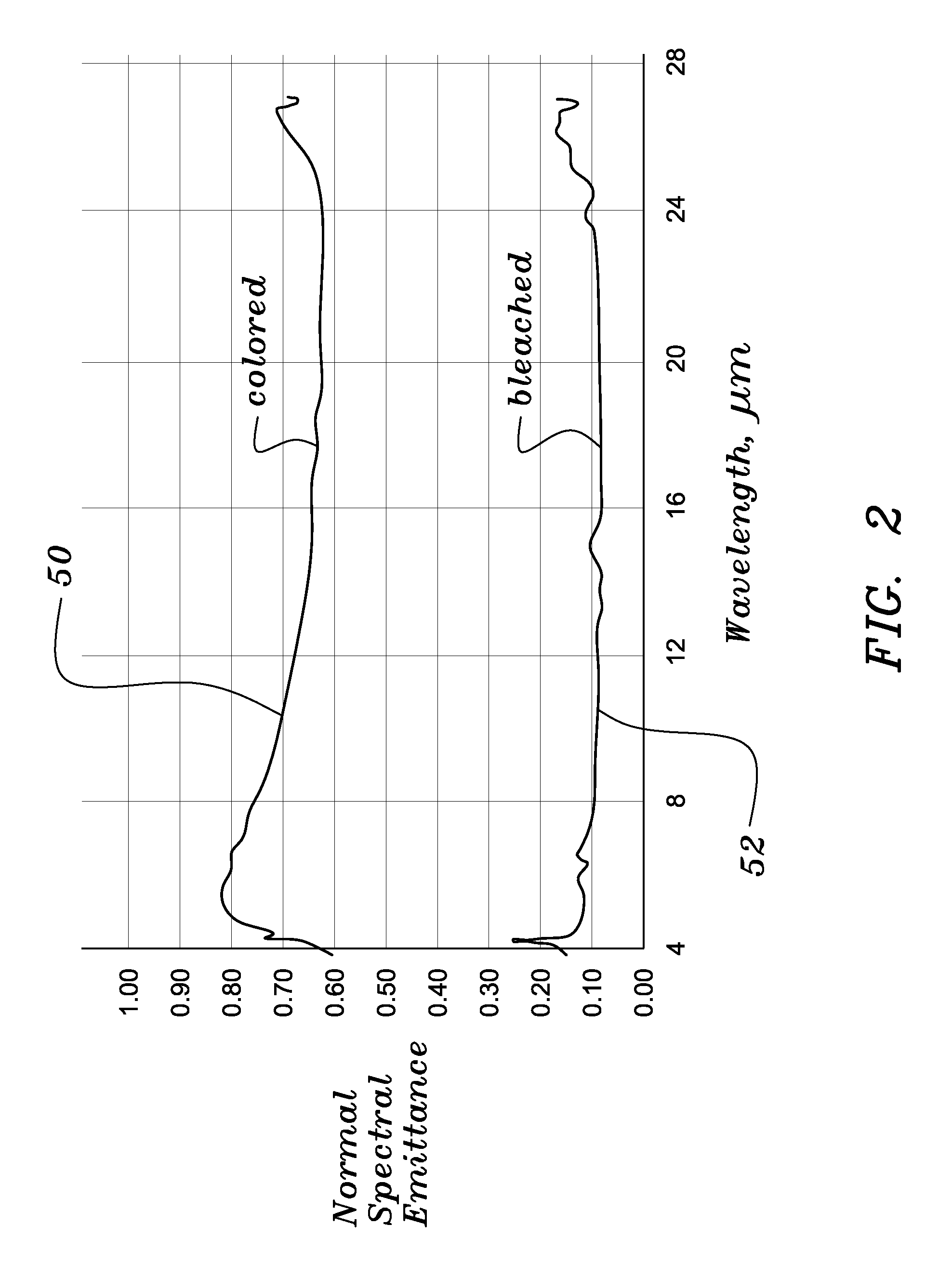Electrochromic infrared tunable filter and emissivity modulator
a technology of emissivity modulator and infrared tunable filter, which is applied in non-linear optics, instruments, optics, etc., can solve the problems of imposing limitations on the switching speed and coloration uniformity, and achieve the effect of fewer vacuum processing cycles
- Summary
- Abstract
- Description
- Claims
- Application Information
AI Technical Summary
Benefits of technology
Problems solved by technology
Method used
Image
Examples
Embodiment Construction
[0027]As depicted in the schematic cross sectional view of FIG. 1-a, an ECD 10 of the invention may be configured to modulate radiation 12 reflected from a mirror-like substrate electrode 14. When the ECD active layers 16 are transparent, external radiation 12 is reflected from a mirror electrode, as depicted in FIG. 1a. When at least one of the active layers is absorbing, however, the radiation is absorbed, rather than being reflected. A configuration of this sort may be used, for example, in a tunable filter for near and mid-IR regions (e.g., 0.78 to 5 microns) and in a space-craft thermal management system in the long wave IR region. It will be recognized that one could also make a transmissive mode ECD device of the sort that is commonly used in applications in the visible region and near infrared regions of the spectrum. Such a device would, of course, require both a transparent substrate and a transparent substrate electrode. A transmissive configuration of the invention might...
PUM
 Login to View More
Login to View More Abstract
Description
Claims
Application Information
 Login to View More
Login to View More - R&D
- Intellectual Property
- Life Sciences
- Materials
- Tech Scout
- Unparalleled Data Quality
- Higher Quality Content
- 60% Fewer Hallucinations
Browse by: Latest US Patents, China's latest patents, Technical Efficacy Thesaurus, Application Domain, Technology Topic, Popular Technical Reports.
© 2025 PatSnap. All rights reserved.Legal|Privacy policy|Modern Slavery Act Transparency Statement|Sitemap|About US| Contact US: help@patsnap.com



